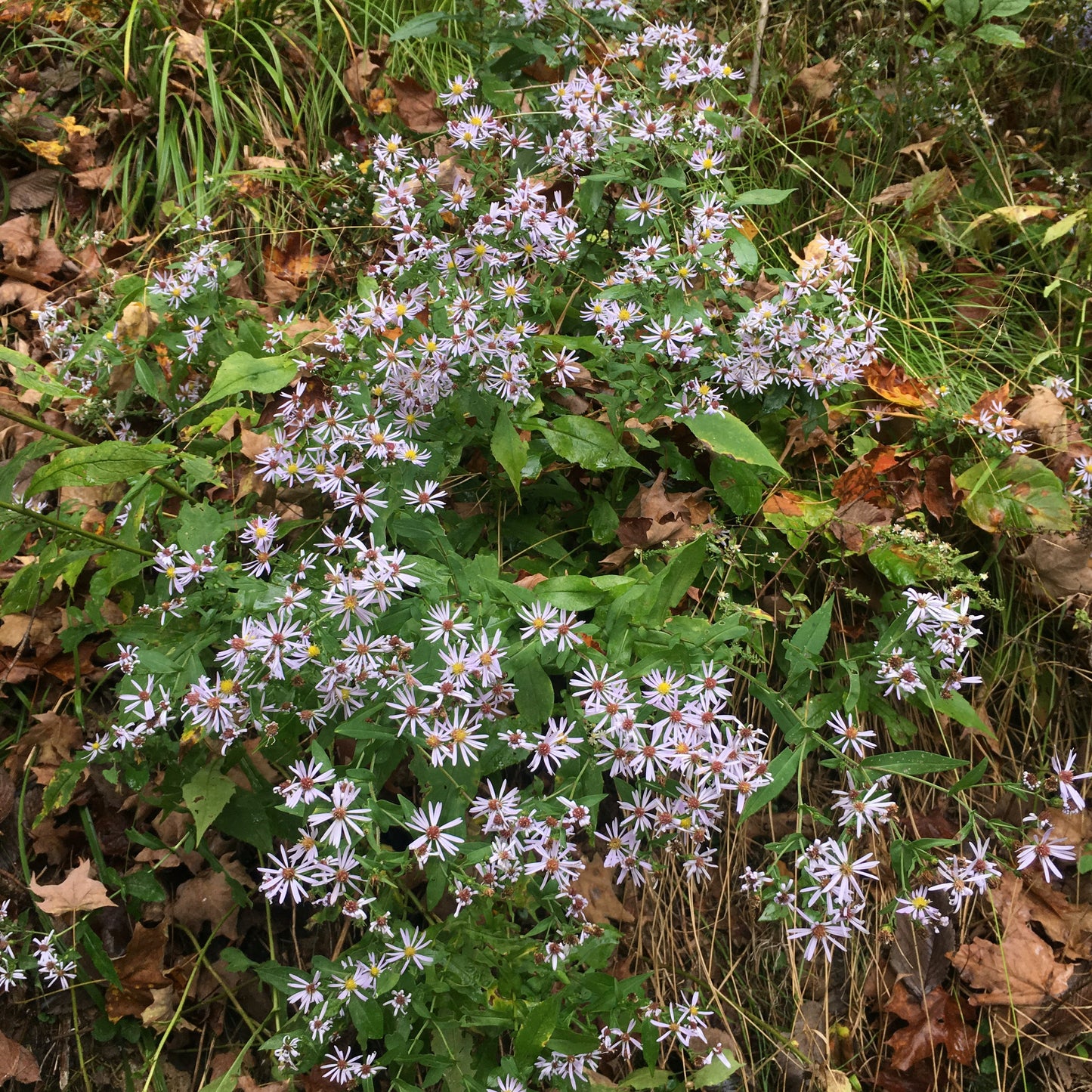Crooked-stem aster
Symphyotrichum prenanthoides
Symphyotrichum prenanthoides
Couldn't load pickup availability
Sun/shade: Full sun to part shade
Soil moisture: Medium
Height: 1-3'
Flowering period: September
Deer resistance: Medium
The subtle blue of crooked-stemmed aster’s autumn bloom hints of the sweet reward that awaits pollinators. Migratory butterflies like the monarch and common buckeye take notice, stopping by for a sip of sugary nectar on their southward flight. Fall mining bees visit as well, gathering the plant’s pollen in order to feed it to their offspring in their underground nests.
A NE Ohio native of woodland edges and wet woods, crooked-stemmed aster grows well in moderately wet to average moisture and under full to partial sunlight. The plant is especially fond of streamside habitats that provide moist, well-drained soil and a gap in the forest canopy. Attaining a mature height of 1-3’, crooked-stemmed aster often spreads to form a small colony.
Crooked-stemmed aster’s modest size and tolerance for partial shade make it especially useful in the autumn garden. Alongside calico aster and zigzag goldenrod, the plant is part of a colorful lineup that will be an absolute hit with pollinators. Like these other plants, crooked stemmed aster spreads by seed and rhizome and requires no extra care to keep coming back. The plant’s windborne seeds may lead to seedlings popping up throughout the garden, so removal of old flowerheads may be desirable.
Photo by Julie Slater.

